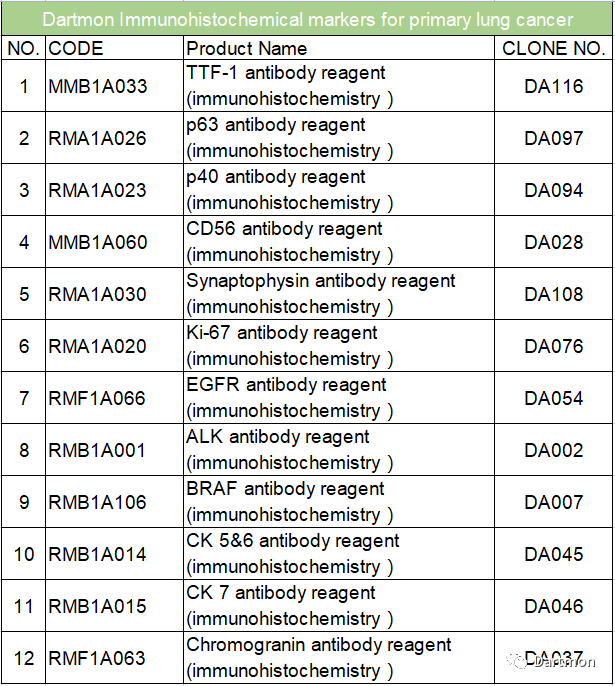World No Tobacco Day | "Lungs": Lung Cancer Related to IHC
Issuing time 2023-06-01 09:40:05
Grow food,not tobacco
World No Tobacco Day was originated from the 6th International Conference on Smoking and Health by World Health Organization (WHO) in Tokyo, Japan on November 1987. Since 1989, World No Tobacco Day has been changed to May 31 every year. In April 2023, the World Health Organization announced that the theme of World No Tobacco Day 2023 is "Grow Food, Not Tobacco".
The danger of tobacco
According to statistics, over 1.4 million lung cancer patients worldwide are affected by smoking each year, with over 80% of lung cancer cases related to smoking. Tobacco products contain various harmful substances, such as nicotine, tar, carbon monoxide, heavy metals, and so on. These harmful substances can cause direct damage to the respiratory system when inhaled into the human body. For example, nicotine can cause the proliferation of bronchial mucosal epithelial cells, leading to the occurrence of cancer in this area; Tar, on the other hand, gradually forms precipitates in the body, causing damage to the structure of the alveoli, thereby increasing the risk of developing lung cancer.
Every time a cell divides, it is possible to produce cancer cells, but the probability of cancer cells being born is very low and they are also targeted by "immune cells". When the body is in good health, immune cells will eliminate cancer cells. However, once long-term smoking leads to continuous cell proliferation, cancer cells may seize the opportunity to enter. Unlike normal cells, cancer cells have three major characteristics: unlimited growth, transformation, and metastasis. One becomes two, and two becomes four, like a wild horse breaking free from the reins, dividing infinitely, multiplying continuously, and ultimately developing into cancer.
China is one of the countries with the largest number of lung cancer patients in the world. The incidence rate and mortality of lung cancer in China are very high. Here are some lung cancer data from China:
According to the data released by the Chinese Center for Disease Control and Prevention in 2020, there were 787000 new cases of lung cancer and 631000 deaths in 2015. According to this statistics, the incidence rate of lung cancer in China is 57/100000, and the mortality rate is 46/100000.
Among all types of cancer, lung cancer ranks first in China in terms of new cases and deaths.
Chinese men have a high incidence of lung cancer. The incidence rate of lung cancer in men is more than three times that in women, and the mortality rate of lung cancer in men is more than four times that in women.
Tobacco is the main risk factor for lung cancer. China has a large smoking population, with a smoking rate of 52.1% for males and 2.7% for females.
With the aging of China's population and the aggravation of environmental pollution, the incidence rate and mortality of lung cancer are rising.
Data source: China Cancer Registration Center
Clinical diagnosis of lung cancer:
The diagnosis of lung cancer is mainly based on clinical manifestations and various auxiliary examinations. Lung cancer, especially peripheral lung cancer, is related to some lungs on imaging
Tuberculosis and some chronic inflammatory diseases are difficult to differentiate, so the diagnosis of lung cancer requires various biopsy or puncture operations to obtain pathological or cytological evidence.
The World Health Organization's 2021 Classification Standards for Lung Cancer Organizations.
The main tissue types of lung cancer are adenocarcinoma and squamous cell carcinoma, accounting for about 80% of all primary lung cancer. Next is small cell carcinoma, accounting for approximately 15%. Other rare types of primary lung cancer include: adenosquamous carcinoma, large cell carcinoma, salivary gland derived carcinoma (adenoid cystic carcinoma, mucoepidermoid carcinoma, etc.), etc. The latest classification has added undifferentiated tumors with SMARCA4 deficiency in the chest. There is an increase in bronchial adenoma in epithelial benign tumors.
Dartmon Immunohistochemical markers for primary lung cancer

quit smoking
Smoking and cancer come together, and the most deadly ones are lung cancer and pancreatic cancer. The incidence rate of lung cancer in long-term smokers is 10-20 times higher than that in non-smokers. It's never too late to reduce the risk of cancer by quitting smoking. From the day of cessation of smoking, blood pressure, heart rate, and carbon monoxide levels in the blood will all improve. After a few months, your lung function will begin to return to normal. After years of smoking cessation, the risk of developing cancer and other chronic diseases will be greatly reduced!


